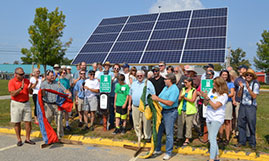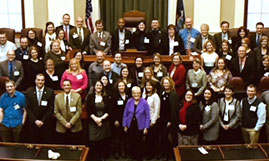Poverty
In 2021, poverty rose from 10.6% to 11.2%.
Unfavorable movement since the last available data
Benchmark: Maine’s poverty rate will decline and remain below the U.S. rate through 2030.
Overview
Maine’s poverty rate reflects both the overall state of the economy and the experiences of individual residents. Federal stimulus measures reduced poverty during the COVID pandemic, but it rose again in 2021. The percentage of Mainers in households with incomes below the poverty level rose to 11.2%, slightly above 2019 pre-pandemic levels. Poverty varied greatly by region—from 7.7% in Cumberland County to 18.2% in Washington County.
State-level poverty rates also mask stark differences within Maine’s populations. From 2017 to 2021, BIPOC* and Latino or Hispanic Mainers were 70% more likely to be living in poverty; and 16% of Maine children under age 5 were living in poverty, compared to 9% of Mainers over age 65. Many poor children are in households headed by single females. From 2017 to 2021, almost 1 in 3 single-mother households were poor (31%), and almost 2 in 5 single moms with children under age 5 were living in poverty (39%).
*Black, Indigenous, and People of Color
Fig. A
On mobile? Viewing this data is easier at a computer.
Percentage of Residents in Poverty
Source : U.S. Census Bureau
Fig. B
On mobile? Viewing this data is easier at a computer.
Poverty Rate by Age, 2017-2021
U.S. Census Bureau







